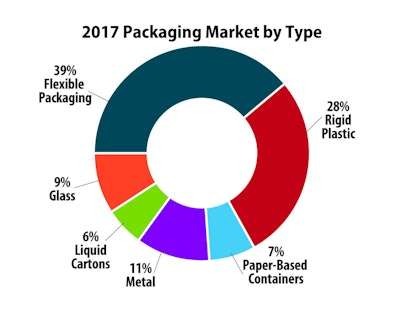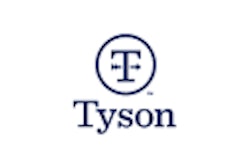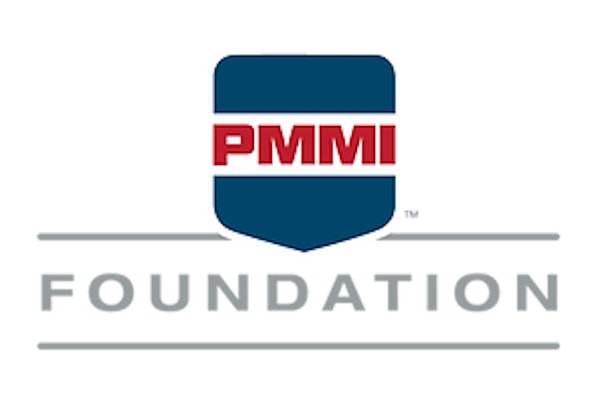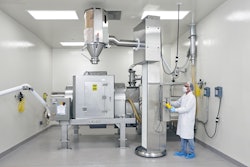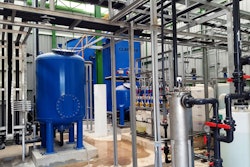Flexible packaging is growing fast worldwide. Making up 39 percent of the global packaging market, flexible packaging is expected to continue its upward surge, according to the 2019 Flexible Packaging Assessment report, produced by PMMI, The Association for Packaging and Processing Technologies. The report credits the accelerated growth in flexible packaging mainly to consumer demand for convenience and sustainability, the rise of e-commerce and an industry push for retail-ready packaging.
The food sector is the largest end user for flexible packaging, according to the report. The food industry was an early adopter of flexible packaging due to the popularity of ready-to-eat foods and snacks to accommodate on-the-go consumers. Flexible packaging growth in this segment is being driven by these consumers, who are more inclined to purchase products in convenient packaging that offer single-serve portions and is resealable, lightweight and portable — regardless of price — the report says.
The emergence of sustainable packaging has also propelled the growth of flexible packaging. More manufacturers are shifting to flexible packaging because they are under increasing pressure from consumers and regulatory agencies to reduce waste. Flexible packaging allows manufacturers to use less materials and biodegradable, recyclable or compostable films in their packaging without compromising barrier properties. Flexible packaging is also suitable for small batch production and lends itself to innovative technology like 3-D printing, which lets manufacturers reuse excess film and other materials.
More retailers are pushing for retail-ready packaging, which is also driving the adoption of flexible packaging, according to the report. Retail-ready packaging creates efficiencies in the supply chain. For example, retailers can easily identify products, making it simpler to pull orders from distribution centers and reducing the likelihood of out-of-stock items. Retail-ready packaging also minimizes labor costs because it simplifies stocking and shelving. Instead of placing each individual product on the retail shelf, an employee simply places a full tray of products on the shelf, saving time. Flexible packaging like stand-up pouches, pouches with fitments and functional trays are well-suited to meet the demands of retail-ready packaging.
E-commerce is another major factor responsible for the increased demand for flexible packaging, according to the report. As more consumers shop online, flexible packaging has proven to be a cost-effective and durable way to ship e-commerce products. Respondents in the report said that flexible packaging is a good alternative to glass or rigid plastic because it protects the product, is light weight and takes up less space, helping to reduce transportation costs. In addition, flexible packaging can withstand the parcel shipping process, which can be harsh compared to palletized shipping.
To download the 2019 Flexible Packaging Assessment report, please visit https://pmmi.org/report/2019-flexible-packaging-market-assessment.
To learn more about flexible packaging trends and technologies, attend PACK EXPO Las Vegas, which will be held from Sept. 23-25. Register here.
